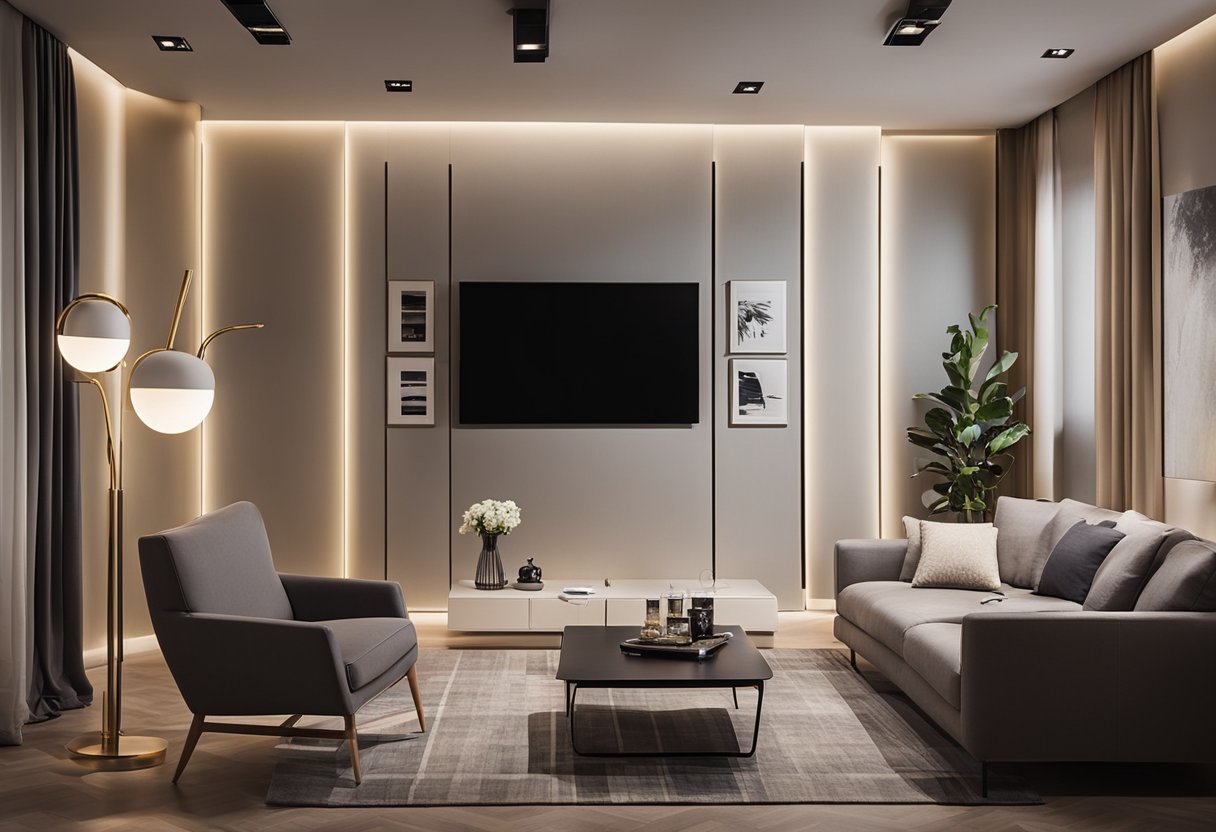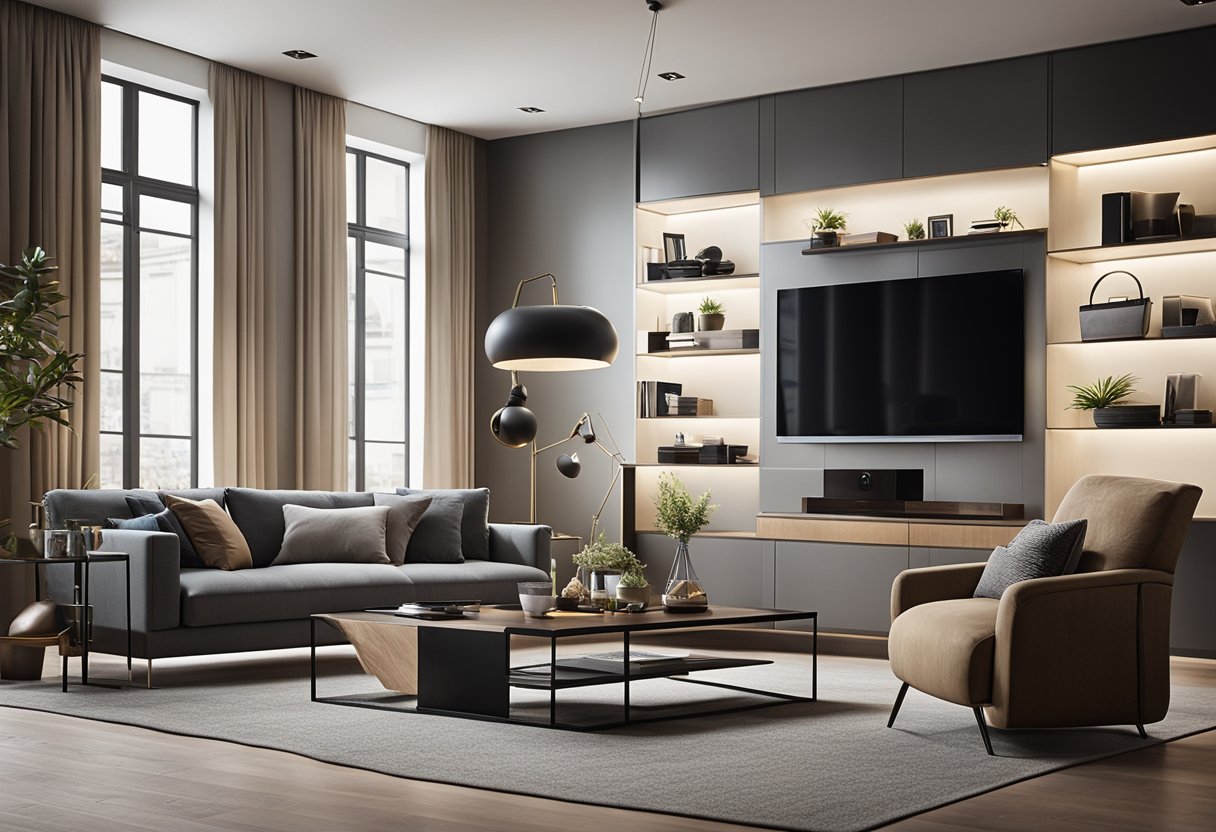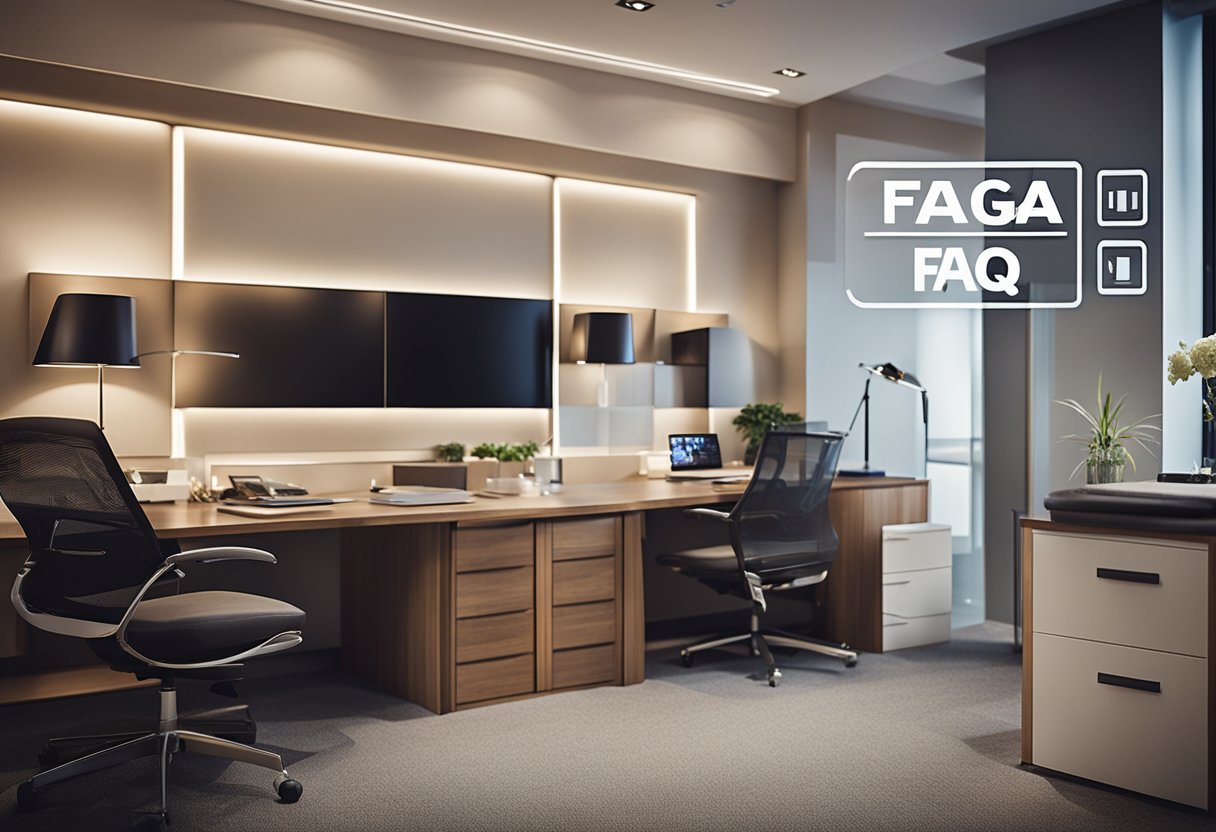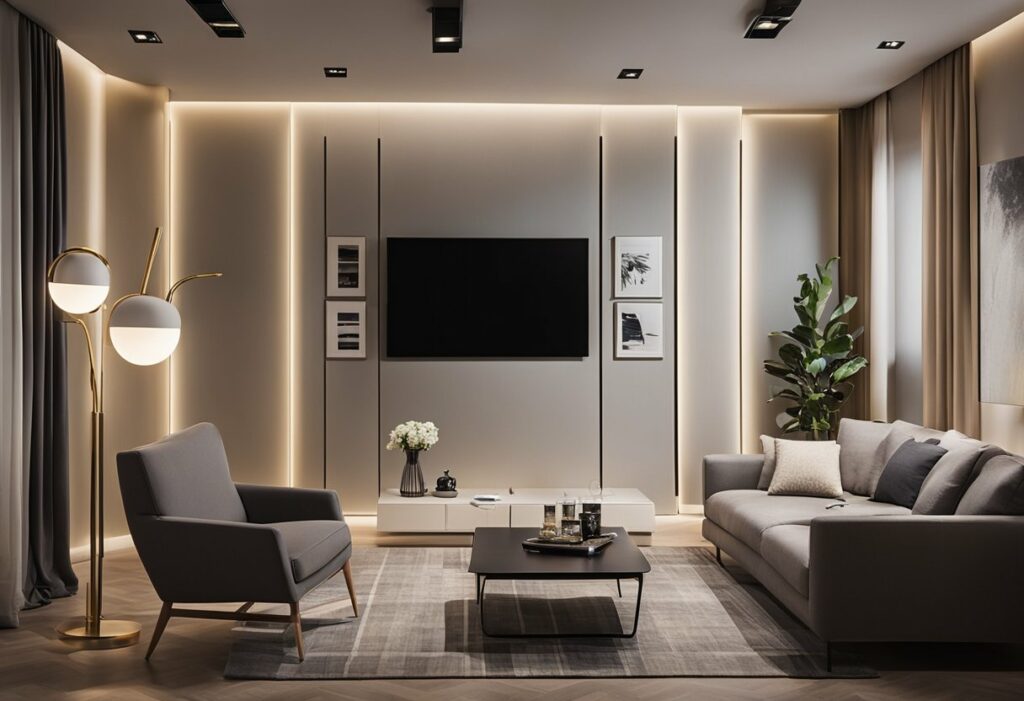Electrical Interior Design: Revolutionizing the Way We Live
Are you looking to refresh your living space with a modern and functional interior design? Look no further than electrical interior design. This innovative approach to interior design incorporates the latest lighting and electrical technologies to create a space that is both aesthetically pleasing and functional.

Designing with Light and Space is a key aspect of electrical interior design. By strategically placing lighting fixtures and using natural light to enhance the space, you can create a warm and inviting atmosphere. Additionally, electrical interior design can help you make the most of small spaces by using lighting and electrical outlets to maximize functionality.
Electrical Essentials for Modern Homes are also an important consideration in electrical interior design. From smart home systems to energy-efficient lighting, there are a range of electrical technologies that can help you create a space that is both functional and sustainable. Whether you are a homeowner looking to update your living space or an interior designer seeking new inspiration, electrical interior design is a must-try trend.
Key Takeaways
- Electrical interior design incorporates the latest lighting and electrical technologies to create a functional and aesthetically pleasing space.
- Designing with Light and Space is a key aspect of electrical interior design, helping to maximize functionality and create a warm and inviting atmosphere.
- Electrical essentials for modern homes, such as smart home systems and energy-efficient lighting, are important considerations in electrical interior design.
Designing with Light and Space

Lighting plays a crucial role in setting the mood and creating a comfortable atmosphere in your home. With the right lighting design, you can transform any space into a warm and inviting haven. Here are some exciting tips to help you design with light and space.
Maximising Natural Light
Natural light is a great way to enhance the beauty of your home while saving on electricity bills. To maximise natural light, consider using large windows and skylights. This will not only brighten up your living spaces but also create a sense of openness and airiness.
Innovative Lighting Fixtures
Innovative lighting fixtures can add a touch of elegance and sophistication to your home. Cove lighting, LED lights, ceiling lights, recessed lights, and track lights are some of the popular lighting fixtures that you can consider. Cove lighting is perfect for creating a soft and warm glow, while LED lights are energy-efficient and long-lasting.
Creating Ambience in Living Areas
Living areas are the heart of any home. To create a warm and inviting atmosphere, consider using dimmer switches to adjust the lighting as per your mood. You can also use floor lamps, table lamps, and wall sconces to create a layered lighting effect. This will not only add depth to your living spaces but also create a cosy and intimate ambience.
Functional Lighting in Kitchens and Dining
The kitchen and dining areas are where functionality is key. To ensure that you have adequate lighting in these areas, consider using task lighting. Task lighting includes under-cabinet lighting, pendant lights, and downlights. These lights are perfect for illuminating specific areas such as countertops, islands, and dining tables.
In conclusion, designing with light and space is an exciting way to enhance the beauty and functionality of your home. By following these tips, you can create a warm and inviting atmosphere that you and your loved ones will enjoy for years to come.
Electrical Essentials for Modern Homes

Designing the electrical layout of your home is an important task that requires careful consideration. You need to ensure that your electrical points are placed in the right positions, your electrical components are safe and stylish, and your electronics and appliances are integrated seamlessly into your home. Additionally, home automation can add convenience and control to your electrical systems.
Smart Placement of Electrical Points
The placement of your electrical points is crucial to ensure that your home is functional and efficient. You want to ensure that you have enough power outlets and power sockets in each room to accommodate all your electrical needs. You should also consider adding USB charging devices to your electrical outlets to make charging your devices more convenient.
Selecting Safe and Stylish Electrical Components
When selecting your electrical components, safety should be a top priority. You want to ensure that your switches, sockets, and power outlets are all up to code and installed by a licensed electrician. Additionally, you can choose from a variety of stylish electrical components to match your home’s décor.
Integrating Electronics and Appliances
Your electronics and appliances should be integrated seamlessly into your home to provide maximum functionality. For example, you can install a refrigerator with a built-in ice maker, a TV with a soundbar, or an air conditioner with a smart thermostat. By integrating your electronics and appliances, you can make your home more comfortable and efficient.
Home Automation for Convenience and Control
Home automation can add convenience and control to your electrical systems. You can automate your lights, thermostat, and security system to make your home more comfortable and secure. Additionally, you can use smart home devices to control your electronics and appliances from your smartphone or tablet.
In summary, designing the electrical layout of your home requires careful consideration of your electrical outlets, safety, convenience, switches, sockets, power outlets, power socket, wires, electrical points, appliances, refrigerator, TV, air conditioners, home automation, charging devices, and electrical systems. By following these tips, you can design a modern and efficient electrical system that meets all your needs.
Frequently Asked Questions

How can innovative wiring enhance the aesthetic of a room?
Innovative wiring solutions can enhance the aesthetic of a room by providing a sleek and modern look that complements the overall design. For example, recessed outlets and switches can provide a seamless appearance, while smart lighting systems can be controlled through your phone or voice commands, eliminating the need for bulky switches and dimmers.
What are the latest trends in integrating electrical features into interior design?
The latest trend in integrating electrical features into interior design is the use of smart home technology. This technology allows you to control lighting, temperature, and entertainment systems with your smartphone or voice commands. The use of wireless charging pads and hidden outlets is also becoming increasingly popular.
How do you plan efficient lighting layouts for a dynamic living space?
To plan an efficient lighting layout for a dynamic living space, you need to consider the function of each area and the amount of natural light that enters the room. Layered lighting, including ambient, task, and accent lighting, can be used to create a versatile and functional space. The use of dimmer switches and smart lighting systems can also provide flexibility and control over the lighting levels.
What safety considerations are crucial when designing a home’s electrical system?
When designing a home’s electrical system, safety should be a top priority. It is important to ensure that the electrical system is up to code and installed by a licensed electrician. Ground fault circuit interrupters (GFCIs) should be installed in areas where water is present, such as bathrooms and kitchens. Smoke detectors and carbon monoxide detectors should also be installed to ensure the safety of the occupants.
How does one conceal electrical components without compromising style?
Electrical components can be concealed without compromising style by using creative solutions such as hidden outlets, recessed switches, and wire management systems. Furniture and cabinetry can also be designed to incorporate electrical components, such as built-in charging stations and lighting.
What are some creative ways to feature exposed electrical elements in a design?
Exposed electrical elements can be featured in a design by using industrial-style lighting fixtures, exposed conduit and wiring, and vintage-style switches and outlets. These elements can add a unique and edgy touch to a design and create a sense of authenticity and character.



